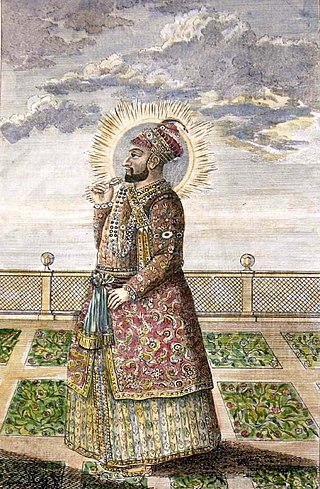
Hyder Ali was the Sultan and de facto ruler of the Kingdom of Mysore in southern India. Born as Hyder Ali, he distinguished himself as a soldier, eventually drawing the attention of Mysore's rulers. Rising to the post of Dalavayi (commander-in-chief) to Krishnaraja Wodeyar II, he came to dominate the titular monarch and the Mysore government. He became the de facto ruler of Mysore as Sarvadhikari by 1761. During intermittent conflicts against the East India Company during the First and Second Anglo–Mysore Wars, Hyder Ali was the military leader.

The Carnatic region is the peninsular South Indian region between the Eastern Ghats and the Bay of Bengal, in the erstwhile Madras Presidency and in the modern Indian states of Tamil Nadu and southern coastal Andhra Pradesh. During the British era, demarcation was different and the region included current day Karnataka and the whole region south of the Deccan.

Ahmad Shah Bahadur, also known as Mirza Ahmad Shah or Mujahid-ud-Din Ahmad Shah Ghazi, was the fourteenth Mughal emperor, born to Emperor Muhammad Shah. He succeeded his father to the throne in 1748, at the age of 22. When Ahmed Shah Bahadur came to power, the Mughal Empire started to decline. Furthermore, his administrative weakness eventually led to the rise of the usurping Imad-ul-Mulk.

The Carnatic wars were a series of military conflicts in the middle of the 18th century in India's coastal Carnatic region, a dependency of Hyderabad State, India. The first Carnatic wars were fought between 1740 and 1748.
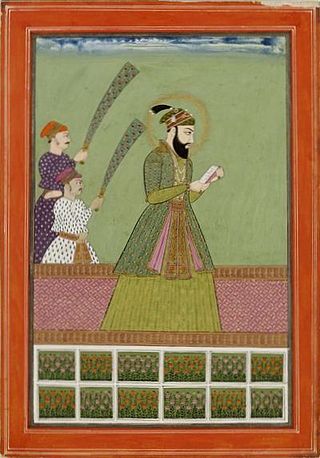
Mir Ahmad Ali Khan Siddiqi Bayafandi, Nasir Jung, was the son of Nizam-ul-Mulk by his wife Saeed-un-nisa Begum. He was born 26 February 1712. He succeeded his father as the Nizam of Hyderabad State in 1748. He had taken up a title of Humayun Jah, Nizam ud-Daula, Nawab Mir Ahmad Ali Khan Siddiqi Bahadur, Nasir Jung, Nawab Subadar of the Deccan. However, he is most famously known as Nasir Jung.

Muhammad Yusuf Khan was a commandant of the British East India Company's Madras Army. He was born in a Tamil Vellalar clan family in a village called Keelapanaiyur in British India, what is now in Mudukulathur Taluk, Ramanathapuram District of Tamil Nadu, India. He converted to Islam and was named Muhammad Yusuf Khan. He was popularly known as Khan Sahib when he became the ruler of Madurai. He became a warrior in the Arcot troops, and later a commandant for the British East India Company troops. The British and the Arcot Nawab employed him to suppress the Polygar uprising in South India. Later he was entrusted to administer the Madurai country when the Madurai Nayak rule ended.

The Carnatic Sultanate was a kingdom in South India between about 1690 and 1855, and was under the legal purview of the Nizam of Hyderabad, until their demise. They initially had their capital at Arcot in the present-day Indian state of Tamil Nadu. Their rule is an important period in the history of the Carnatic and Coromandel Coast regions, in which the Mughal Empire gave way to the rising influence of the Maratha Empire, and later the emergence of the British Raj.

Muhammad Ali Khan Wallajah, or Muhammed Ali, Wallajah, was the Nawab of the Carnatic from 1749 until his death in 1795. He declared himself Nawab in 1749. This position was disputed between Wallajah and Chanda Sahib. In 1752, after several clashes, Chanda Sahib's forces and his French allies were expelled from Arcot, officially declaring Wallajah as Nawab on 26 August 1765. His reign was recognised by Mughal emperor Shah Alam II.
Sa'adatullah Khan II a.k.a. Muhammad Sayyid was Nawab of Arcot, who was a younger son of Safdar Ali Khan.
Bangaru Thirumala Nayaka, also known as Bangaru Tirumala and Vangaru Thirumala, was a member of Madurai Nayak royal family and Governor/Commander of the Madurai Nayak King Vijaya Ranga Chokkanatha (1704–1731). His son, a young boy was adopted and crowned to the Madurai Throne, with the queen Meenakshi as queen regent, when the Madurai king died without heir. Strife between Bangaru Thirumala and queen Meenakshi would later erupt into many battles leading to the downfall of the dynasty. Later, through marriage alliances with the Sinhalese royalty, relatives of Bangaru Thirumala came to rule the Kandy kingdom in Sri Lanka. They ruled till 1815 when the last king, Sri Vikrama Rajasinha was deposed and taken captive by the British. He was exiled to Vellore Fort from Kandy.
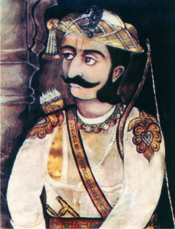
Raghoji I or Raghuji the Great, was a Maratha general of the Bhonsle dynasty who established the Nagpur Kingdom in much of east-central India during the reign of Chhatrapati Shahu I. His successors ruled the kingdom until 1853.
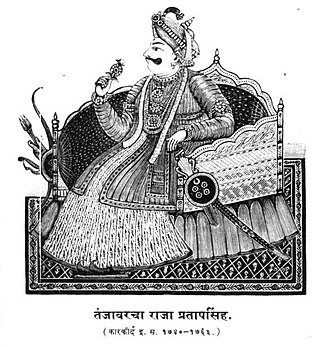
Pratap Singh Bhonsle or Pratapsinha was the Maratha ruler of Thanjavur of the Bhonsle dynasty from 1739 to 1763. His rise to power followed three years of anarchy and civil war and restored the state to its previous greatness. His reign witnessed the Carnatic Wars and the Seven Years' War.

The siege of Arcot took place at Arcot, India between forces of the British East India Company led by Robert Clive allied with Muhammad Ali Khan Wallajah and forces of Nawab of the Carnatic, Chanda Sahib, allied with the French East India Company. It was part of the Second Carnatic War.

The siege of Trichinopoly was part of an extended series of conflicts between the Nizam of Hyderabad and the Maratha Empire for control of the Carnatic region. On 29 August 1743, after a six-month siege, Murari Rao surrendered, giving Nizam ul Mulk (Nizam) the suzerainty of Trichinopoly. By the end of 1743, the Nizam had regained full control of Deccan. This stopped the Maratha interference in the region and ended their hegemony over the Carnatic. The Nizam resolved the internal conflicts among the regional hereditary nobles (Nawabs) for the seat of governor (Subedar) of Arcot State, and monitored the activities of the British East India company and French East India Company by limiting their access to ports and trading.
The siege of Trichinopoly (1751–1752) was conducted by Chanda Sahib, who had been recognized as the Nawab of the Carnatic by representatives of the French East India Company, against the fortress town of Tiruchirappalli, held by Muhammed Ali Khan Wallajah.

Tiruchirappalli is believed to be of great antiquity and has been ruled by the Early Cholas, Mutharaiyars Early Pandyas, Pallavas, Medieval Cholas, Later Cholas, Later Pandyas, Delhi Sultanate, Ma'bar Sultanate, Vijayanagar Empire, Nayak Dynasty, the Carnatic state and the British at different times. The archaeologically important town of Uraiyur which served as the capital of the Early Cholas is a Neighborhood of Tiruchirapalli.

Tiruchirappalli Fort is a dilapidated fort in India which once protected the Old City of Trichy encompassing Big Bazaar Street, Singarathope, Bishop Heber School, Teppakulam and Tiruchirapalli Rock Fort. All that remains now is a railway station with that name and Main Guard Gate along West Boulevard Road in the city of Tiruchirappalli in Tamil Nadu. The fort can be traced along West Boulevard Road in West, East Boulevard Road in East, Butter-worth Road in North and Gandhi Market to the South.

The Battle of Ambur was the first major battle of the Second Carnatic War.

The Chanda Sahib invasion of Travancore was a military expedition of the Carnatic Sultanate under Chanda Sahib against the Kingdom of Travancore in 1740, in South India. In the event, the Carnatic Sultanate invaded the Kingdom of Travancore, resulting in the Carnatic forces defeating the Travancore army led by Ramayyan Dalawa.
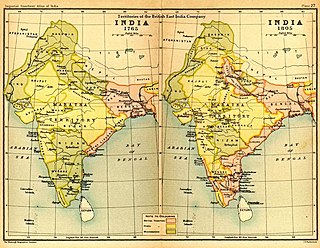
The Maratha-Nizam wars (1720–1819) was a series of military conflicts between the Maratha Empire and the Nizam of Hyderabad, spanning nearly a century. These conflicts arose primarily from the Marathas' imposition of Chauth, a form of tribute, on the Nizam's dominions, leading to tensions and subsequent hostilities between the two powers. The Nizam's response to the Maratha demands sparked a series of clashes and wars aimed at resisting Maratha encroachment and asserting territorial sovereignty.



















